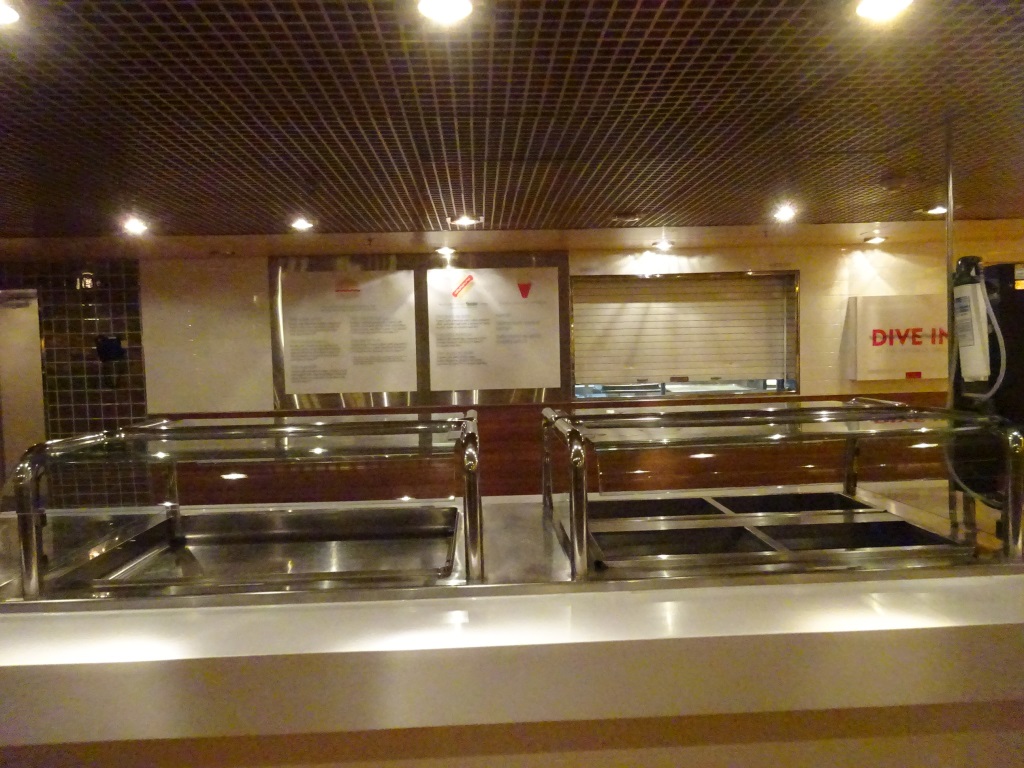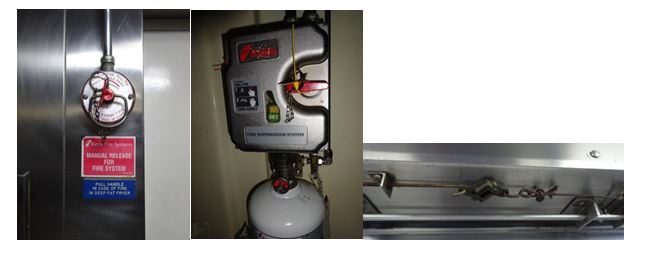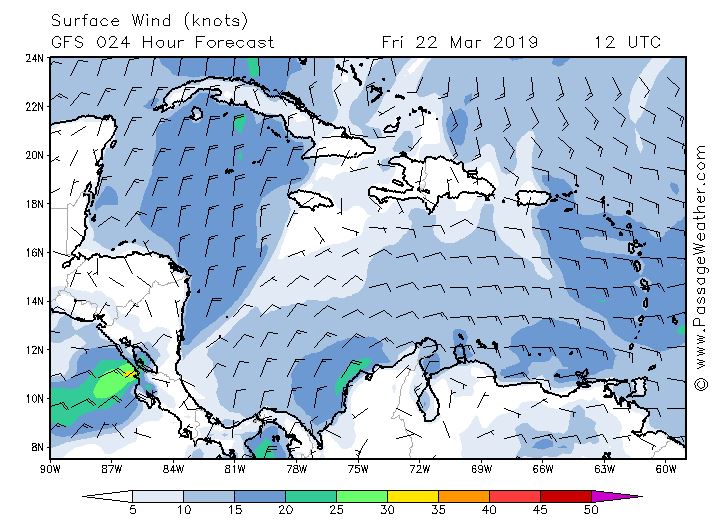This current wind is our friend. It came from the north and was thus a following wind and then fell away (shielded by) when we entered the Windward Passage with Cuba to the West and Haiti on Hispaniola to the East. Then it turned to the north but only with a low velocity blowing against us. All due to that large frontal system that came through in the last few days and as a sort of Vacuum cleaner emptied the whole area out of wind. Well not emptied out, it balanced out the difference in High pressure and Low pressure here. Now the Trade Wind system has to re-establish itself and then we will be back to normal. The normal will be Easterly winds four 4 to 5 beaufort but here we still have this near wind still weather (which also means less whipped up waves) and that is something to enjoy and cherish while it lasts.
One of the jobs I do to help the ships is to provide little –practical – manuals for the officers to giving training. As the ships systems are getting more and more complex and at the same time, the time available to learn while on board is getting more and more precious. Nothing unusual to that, with email and other media devices a tsunami of information is coming towards you each and every day and behold the wrath of the sender if you would just miss a particular one. Plus quite often you ache to pull the contents of several manuals together to get a workable overview, as things get changed and updated. So while the officers are safely navigating between Cuba and Haiti (we will be in the Caribbean Sea by 1700 hrs.) I am writing sort of “dummy books” and although the officers are no dummies, it saves them from reading 200 pages of manuals while 5 pages are sufficient to do the job safely.
That brought me to the question do our guests really realize how much technique and how many layers of safety lay between them and the occurrence of an incident? And the incident we worry about most is Fire. Either caused by negligence or by a mechanical or electrical issue. To give a simple example: our Dive In on the Lido Deck. Extremely popular with guests who do not mind to queue up for 10 minutes (They do not have to as they get a pager but they still do) to lay their hands on a hamburger with a special Holland America Line sauce. Well, if a fire would start in the Deep Fat Fryer and turned your fries extra crisp, then you are very well protected.
First of all the shutter at the serving counter will come down. Either activated by a cook or by a glass bulb which breaks as the temperature goes over the allowed maximum. That blocks off the whole Dive In. It has now become a box of steel which should be able to keep the fire contained for at least 60 minutes.

The Dive In on Lido Deck. The shutter is only up when there is service and somebody is in attendance.
From now on, there are two options: either the cooks think he/she is still able to do something or he/she thinks it is too dangerous and gets out. We call that big fire versus small fire. A small fire is a fire that you feel comfortable with extinguishing yourself, a big fire is one that you don’t. To stop the fire if he/she feels comfortable to do so and most of them will as they are all trained in the basic routines. The cooks all have available:
1. Fire extinguishers. One next to the entrance, the others no more than 45 feet away.
2. Fire Blankets. Lay them over the fire and it will smother it as the oxygen is cut off.

I know these are not exactly sexy photos but this equipment can save lives and ship. From left to right the release button connected to the wet chemical in a cylinder and right the self release by means of a glass bulb that breaks with high temperatures.
3. Wet chemical suppression, which produces a foam surface over an oil fire. (You do not use water on an oil fire) The cook can pull the pin to activate it but if the pin cannot be reached then it will activate itself as soon as a break glass cracks under a too high a temperature.
4. Hood cleaning system. Each cooking –exhaust – hood in all the galleys on the ship has a cleaning system that is used every night to clean out the grease that went in the hood during cooking. It is for preventive maintenance but can also be used as an extinguishing agent as it is made up of soap and water which will stream down the side of the hood uptake and will cool things down.
5. CO2 in the hood. This gas will replace the Oxygen in the air in the hood and thus stop the fire. For releasing this agent we have strict protocols as CO2 can be lethal to humans.
6. All accompanied by Emergency stops and Fan room’s shutdown for Electricity and Ventilation.
If the Cook does not feel comfortable:
7. Fire teams. We get the big boys out (our fire teams) who will be on scene within 10 minutes with the heavy foam sprays. (The 10 minutes is counted from being deep asleep to sticking the nozzle inside the door)
All this material, for a simple hamburger that might be going un-expectedly from medium rare to extremely well done…… But at least we can be sure, it stays with the hamburger.
Tonight and tomorrow we will be sailing in the Caribbean Sea, and all our eyes are on the area around North Colombia. There is massive low pressure system which should generate quite a bit of wind from the Northern Caribbean. But it is filling in a little bit, so we might be lucky.

Look at how nice the Caribbean Sea is at the moment. But we are keeping our eyes on that little green bit near Colombia to see if it will go to blue or will get greener. (Diagram courtesy: www.PassageWeather.com

March 22, 2019 at 12:00 am
Beste kapitein Albert,
Ik geniet altijd van uw beschrijving, ongeacht het onderwerp. Steeds weer weet u te boeien over het varen/cruisen en alles wat daarmee samenhangt. Het geeft de leek zoveel meer inzicht over wat er allemaal bij komt kijken. Onnodig te zeggen dat ik alweer uitkijk naar het volgende blog. Ik hoop dat u hier nog lang mee door zult kunnen gaan.
Met vriendelijke groet,
Ina Schakel
March 22, 2019 at 2:52 am
That was very interesting. Makes me feel very safe no matter where I am on the ship with all these precautions.
March 22, 2019 at 1:38 pm
Goedemiddag
Goede verslagen toch heb ik een vraag. Waarom mag je bij de ene kaptein
wel in de stuurhut kijken en bij de andere kaptein niet.
March 22, 2019 at 5:15 pm
Mijn dank voor het lezen van het blog.
De regel is dat De Kapitein mensen in het stuurhuis mag laten als het de veilige navigatie niet in gevaar brengt. Dat kan afhangen van het weer, vaar gebied, maar ook het aantal stuurlieden op wacht, hun ervaring, en eventuele interne situaties en machine kamer werk of andere factoren. De inschikking van de situatie ligt geheel voor de kapitein. En iedereen ziet het wat anders. Een kapitein met meer ervaring ziet mischien minder problemen, vanwege zijn ervaring, of juist meer problemen vanwege ervaringen in het verleden. Dan als er iemand uitgenodigd wordt dan komt het steed vaker voor dat dezepersonen hun mond (of sociale media) niet dicht kunnen houden en dan komen er weer klachten van andere gasten, die ineens op willen. Dus de kapiteins zijn tegenwoordig wat voorzichtiger dan vroeger.
mvg
Capt. Albert
April 3, 2019 at 1:16 am
Great response Kaptein (bridge visits) one of the best I’ve heard!